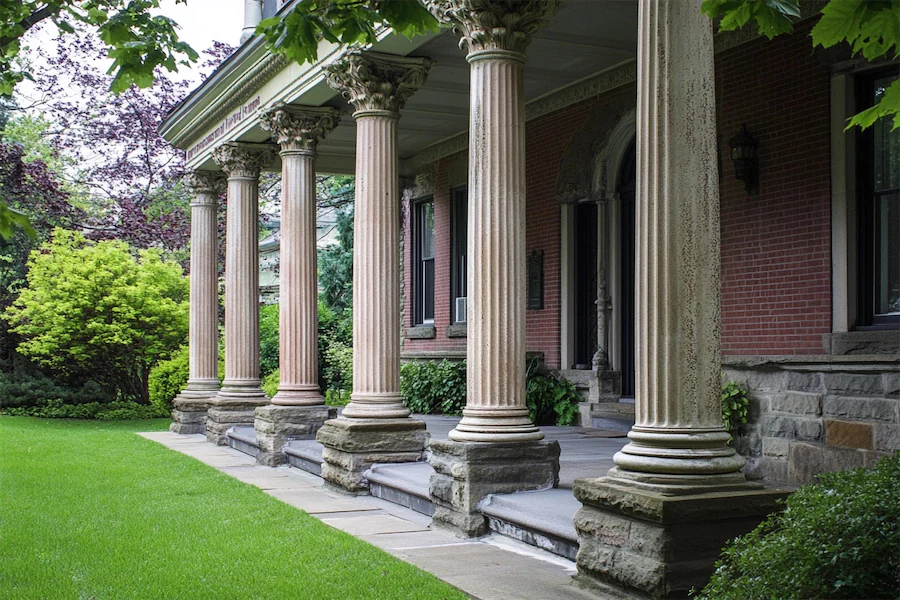Tudor columns are integral elements of Tudor architecture, a style that flourished in England during the Tudor period (1485–1603). This architectural style represents a transition from medieval Gothic to early Renaissance design, characterized by distinctive features that reflect the social and cultural shifts of the era.
History and Origins of Tudor Columns
Tudor architecture emerged as England moved away from the feudal system, leading to the construction of more domestic and personal residences. The period saw the introduction of Renaissance influences, which began to permeate traditional Gothic designs. Columns during this time were primarily decorative, often framing doorways and fireplaces, and occasionally featured classical details such as round-headed arches and pilasters.
Key Features of Tudor Columns
Tudor columns exhibit several distinctive characteristics:
- Decorative Function: Unlike the structural columns of classical architecture, Tudor columns were mainly ornamental, enhancing the aesthetic appeal of entryways and interior spaces.
- Classical Details: Some columns incorporated Renaissance elements, including round-headed arches and pilasters, reflecting the gradual shift towards classical architecture.
- Integration with Timber Framing: In half-timbered Tudor houses, wooden columns and beams were often exposed, contributing to the characteristic black-and-white appearance of these structures.
Applications of Tudor Columns
Tudor columns were utilized in various architectural contexts:
- Entryways: Ornate doorways often featured columns or pilasters, adding grandeur to the entrances of Tudor homes.
- Fireplaces: Elaborate fireplaces were framed with decorative columns, serving as focal points within the interior spaces.
- Interior Spaces: Columns and beams were used to define and separate different areas within large halls, contributing to the overall structural rhythm of the space.
Considerations When Incorporating Tudor Columns
When integrating Tudor columns into architectural designs, consider the following:
- Authentic Materials: Utilize traditional materials such as oak for timber-framed structures to maintain historical accuracy.
- Craftsmanship: Attention to detail in the carving and finishing of columns is essential to replicate the intricate designs characteristic of the Tudor period.
- Harmonious Design: Ensure that the incorporation of Tudor columns complements other architectural elements, such as steep gable roofs and leaded glass windows, to achieve a cohesive aesthetic.
Conclusion
Tudor columns, though primarily decorative, play a significant role in defining the architectural charm of the Tudor style. Their integration of medieval and early Renaissance elements reflects a pivotal period in architectural history, offering timeless inspiration for incorporating historical elegance into contemporary designs.
